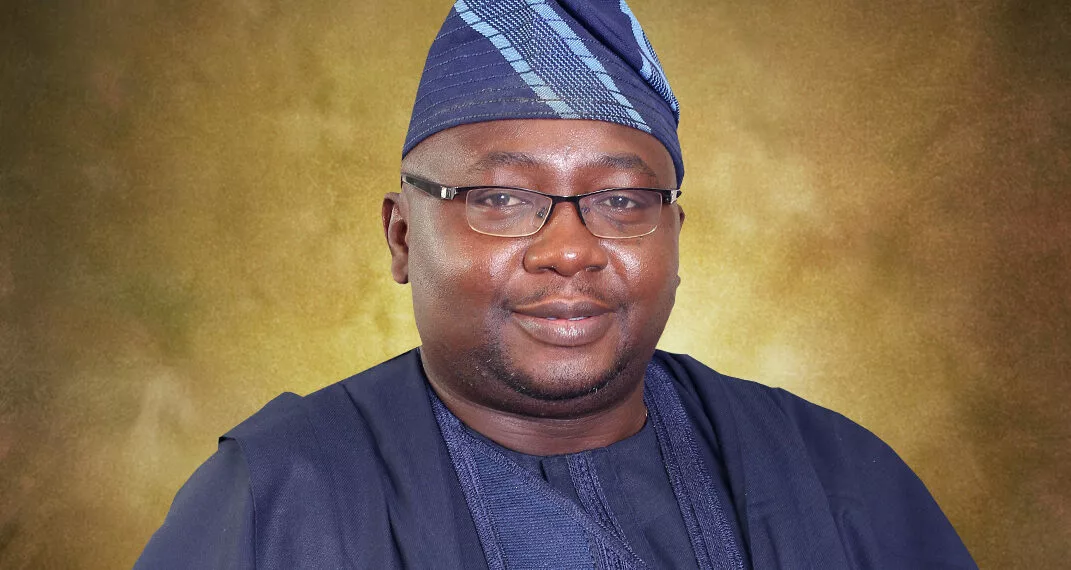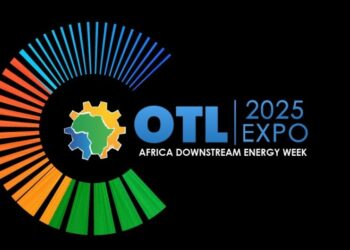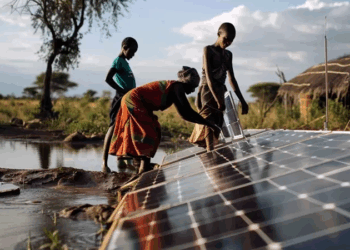Growing regional tensions is pushing energy starved Europe to fall back on Africa to secure more oil import deals.
Key European countries are looking up to Nigeria to sign more trade deals that will help them sustain energy deployment as crises continue to alter oil flow.
Presently the German Chancellor Olaf Scholz, is opening discussion with authorities in Nigeria and other countries in West Africa, on the possibility of importing more oil and gas to meet his Countries energy need.
The chancellor last weekend made his third visit to sub-Saharan Africa in two years, as conflicts elsewhere highlight the growing importance of an energy-rich region in which Berlin has traditionally had little involvement.
His visit targeted major energy producer Nigeria, as well as Ghana, with migration flows and instability in West Africa also on his agenda.
Much of the impetus for the trip has come from the realisation that Germany – and Europe – need Africa more than it thought, said Greens legislator Anton Hofreiter.
“People realised we needed allies against Russia’s invasion of Ukraine,” he said. “And suddenly we noticed they weren’t necessarily on our side. That was a rude awakening.”
The war between Israel and Hamas has leant new urgency in particular to the energy aspect of the trip.
After Russia’s invaded Ukraine in February 2022, Germany turned to Qatar for the liquefied gas it needs to fuel its industries. Potential disorder across the Middle East has provided a timely reminder of the importance of diversifying energy sources.
Oil is Nigeria’s single largest export to Germany, and officials are considering adding gas to that mix.
“Oil-exporting countries face the question of whether they want to flare all that gas off or use it,” a German official said in connection with the visit. “We are very open to discussing with Nigeria whether we can buy gas too.”
But to make that happen, chronic underinvestment in Nigeria’s energy sector would need to be looked at – something the as-yet unidentified business delegation accompanying Scholz may be able to help address.
The underinvestment in the country’s energy sector was a focus in discussion at the 6th Valuechain Annual Lecture and Awards, last week during when Vice President Kashim Shettima, agreed that Nigeria was still very far from reaping the full benefits of its enormous gas resources, compared to even African countries with far less reserves, but which earn more than Nigeria’s $5 billion annually.
Shettima, at the ceremony, noted that Nigeria remains an ‘ocean of gas and a drop of oil’, with over 200 trillion cubic feet, TCF of untapped gas resources and ranking 9th globally in terms of proven reserves.
The theme of the event was: “Midstream Gas Development: A Pathway to Energy Transition.” Shettima was represented by the special adviser to the president on energy and power infrastructure, Office of the Vice President, Sodiq Wanka.
Stressing that the impact of fully exploiting the nation’s gas reserves would be massive, the vice president explained that gas remains critical to the nation’s power supply, accounting for over 80 per cent of total generation.
Describing gas as a critical transition fuel for the country’s ambitious climate targets of hitting net-zero by 2060, the vice president said growing Nigeria’s production would enhance other gas-based industries, from fertiliser methanol to cement and consumer goods.
A booming economy built on the exploitation of gas reserves, he maintained ,can vastly enhance the fiscal position of the federation.
“But the story of Nigeria’s gas riches and potential cannot be complete without understanding that we are far off from that potential and have a lot of work to do, as public sector leaders and as captains of industry.
“Today, Nigeria earns around $5 billion from gas production, a figure that is 40 per cent less than in Egypt, which has around 30 per cent of Nigeria’s reserves. Our production to reserve ratio is less than a 3rd of Egypt’s, less than a quarter of Algeria’s and around 10 per cent of Malaysia’s,” he pointed out.
In the aftermath of the Russia-Ukraine war, Shettima said the the European Union (EU) and many other nations were shopping for Liquefied Petroleum Gas (LNG), lamenting that at the same time, Nigeria’s largest LNG assets were operating significantly below capacity because gas supply was inadequate.
“At this rate, according to ‘Decade of Gas’ analysis, we could have a demand-supply gap of up to 10bscfd of gas by 2030,” he added.
On how gas can impact the economy, the vice president highlighted the number of power plants and factories that have built up around the Escravos-Lagos-Pipeline system and its various spurs.
He expressed happiness that the AKK pipeline was nearing completion, which will unlock gas demand along the northern corridor, but noted that there was still a lot of work left to be done.
“The Obigbo-Umuahia-Ajaokuta pipeline will be key to ensuring the AKK pipeline is not gas-constrained while opening up new demand along its right of way. There is much work left on expanding the ELPS network among others.
“These projects can be significantly accelerated if we focus on making investments in them more attractive. Our network code must adequately cover private pipelines.
“We have to ensure that private investors are able to recover their costs and make a return on their investments by creating a new framework for tariffs that is not too rigid. And we need to have clear guidelines for tolling. The story is similar for other midstream infrastructure,” he stressed.
On what the government is doing to solve the challenges, he explained that Nigeria cannot talk about midstream infrastructure in isolation, with the power sector remaining the largest consumer of domestic gas.
“The government is working actively to resolve longstanding liquidity issues in the sector. Some of the most ambitious customer metering initiatives are underway or soon to be announced.
“We will continue to strengthen sector governance that favours only technically and financially sound investors to own key assets in the power sector. We will drive the implementation of the Electricity Act 2023 to create a new narrative and new national framework for electricity that will bring investment to the electricity sector.
“In terms of upstream gas, the commitment of the government in ensuring the right tariffs to encourage exploitation of non-associated gas remains strong. The government will also not rest in continuing to pursue a holistic approach to the issue of security of petroleum assets – from strengthening the operationalisation of the Host Communities Trust Fund to closer community engagement, surveillance and prosecution of identified vandals,” he noted.
Shettima urged the private sector to be at the forefront of realising the country’s economic potential, stressing that Nigeria cannot be a net exporter of LPG and still import LPG for domestic use because of infrastructure gaps.
The German chancellor also see Nigeria, with a population of 200 million, and Ghana, with 30 million, as sources of the labour that Germany badly needs as its own population increasingly ages out of the workforce.
“Especially in Ghana there are IT experts that German medium-sized companies are desperate to get hold of,” said Stefan Liebing, a consultant and former head of the German African Business Association.
Some in Berlin hope that Germany, without France’s baggage as the former colonial power in West Africa, will also be in a position to play a constructive political role in a region that has been marked by instability this year.
Last year, Germany returned several of the Benin Bronzes, sculptures from the Benin kingdom in modern-day Nigeria, a gesture seen as an attempt to win favour on a continent where anger at European colonial crimes still smoulders.
For Scholz, under pressure at home from critics who say that he is failing to get to grips with the scale of illegal migration, the trip will also be a chance to advance his argument that creating economic opportunities in the source countries is the best way of reducing migrant flows.
Beside, underinvestment, Nigeria is also reportedly holding sizable crude overhangs for loadings scheduled for November just as crude premiums to benchmark prices have come down by $1 to $2 a barrel depending on the grade, traders said.
A similar overhangs is reported in Angola’s November schedule.
“This could be the start of things to come,” FGE analyst James Davis said, referring to the weaker West African differentials.
“Globally, demand is tracking sideways from here, and we’re going to see increases in crude supply from non-OPEC. Come January, the market could start looking a bit longer.”
For West African crude demand to pick up again, premiums need to come down further, traders said. Otherwise, prices for oil products to need to rise proportionally, FGE’s Davis said.
Some West African crudes hit multi-month highs in early October. For instance, Nigeria’s Bonga crude was offered at a premium of $9 a barrel to the benchmark dated Brent, while Escravos and Forcados were on offer in excess of $8.
However, freight rates have since jumped and refiners’ profit margins have narrowed, weighing on demand.
As of Tuesday, there were 20-30 cargoes of Nigerian crude left, and about 6-7 cargoes of Angolan crude for November, far more than is typically expected to be left over at this stage of the trading cycle, traders and an analyst told Reuters.
The market is “very, very sluggish,” another trader said. “The market is going down, margins look bad,” said a third.
Angola’s December loading schedule is already out and has yet to find any buyers, as are plans for December loading for some Nigerian grades.
The jump in freight costs followed two developments – the Hamas cross-border attack on Israel on October 7 and the United States on Oct. 12 imposing the first sanctions on owners of tankers carrying Russian oil priced above the G7’s $60 cap.
Key freight rates for crude have jumped, according to LSEG data , including routes from West Africa to demand centres such as China .
Crude oil prices in some of the world’s main physical markets have weakened due to a jump in freight costs and a drop in refining margins, according to traders and LSEG data, suggesting demand weakness that could filter through to the futures market.
Falling prices for physical crude could presage a fall in crude futures, while Brent crude futures have risen above $87 a barrel from the low $70s in June due to OPEC+ supply cuts, and more recently on concern that exports from the Middle East could fall if the conflict in Gaza widens.
Crude output from the U.S., the biggest non-OPEC supply source, hit a record 13.2 million barrels per day earlier this month. Physical markets in other parts of the world are also weakening.
The premium of North Sea Forties to dated Brent has weakened to $1.65 a barrel, according to LSEG data, down from plus $2.48 on October 11, while the U.S. cash crude market has broadly weakened over the last week, traders said.
Forties is one of the largest North Sea grades that helps set the value of dated Brent, used as a benchmark in physical crude trading around the world.
“Generally, the North Sea is weaker as margins are weak and refiners don’t want to stock up before end of year,” a crude trading analyst who declined to named said.
Refining margins have weakened worldwide, particularly for gasoline and naphtha, in part due to the end of the U.S. summer driving season and rising U.S. gasoline inventories, as well as the rising cost of crude.
Sweet and sour U.S. crude grades alike have weakened, with WTI Midland dropping to a 10 cent premium to U.S. crude futures this week, the weakest since December, and West Texas Sour trading at a $1.75 discount, weakest since March.
Refining margins have weakened in response to higher outright crude prices during October, traders said. Dated Brent reached over $94 a barrel on Oct. 13, some $3 short of 2023’s high, before falling back, according to the LSEG.
Margins for European naphtha and gasolines have weakened significantly in the past few weeks, a trader said. Another said the profit margins for naphtha and fuel oil had slipped to negative territory.
But beside unsold cargoes, Nigeria is facing production hiccups even as the International Energy Agency (IEA), has predicted that though global oil demand would peak this decade at about 102 million barrels per day (mbd) for two more decades, however, fossil fuel share in global energy supply would witness decline to 73 per cent by 2030 and carbon dioxide emissions peaking by 2025.
According to the IEA’s World Energy Outlook, WOE, 2023, “The fossil fuels share in the global energy supply would decline to 73 per cent by 2030, “which has been stuck for decades at around 80 per cent.
From 2030, oil consumption will begin a slow decline by decreasing over by more than 4 million barrels a day, mbd, to 97.4mbd in 2050, the IEA said in its Stated Policies Scenario (STEPS).
The WOE also said that in 2030, clean technologies will play a “greater role than today”. For instance, electric cars on the road worldwide will increase by 10 times, and renewables’ share of the global electricity mix will be near 50 per cent, up by 30 per cent.
According to the IEA, heat pumps and other electric heating systems will outsell fossil fuel boilers globally, and investment into new offshore wind projects will be three times more than new coal and gas-fired power plants.
“The World Energy Outlook 2023 underscores the increasingly narrow path toward preserving the goal of 1.5°C warming, yet provides hope that this remains attainable if we promptly embark on transformative climate actions,” Lindsay Ventress, Global Net-Zero Transformation Advisory Operations Manager, EcoAct, commented on the report.
“The report’s call for an annual twofold increase in energy efficiency improvements underscores its critical role in a sustainable future, but also the current failure of legislators to get to grips with this vital requirement. In light of this, businesses cannot afford to merely wait for government commitments; they must become catalysts for progress,” she added.
Even so, the demand for fossil fuels is set to remain “far too high” to limit the global rise in temperatures to 1.5°C, as per the Paris Agreement. Despite the impressive growth in clean energy, if the policies are not changed, global emissions will remain high to push the temperature limit by around 2.4°C this century, the IEA says. The STEPS also estimates a peak in energy-related carbon dioxide emissions in the mid-2020s.
“Taking into account the ongoing strains and volatility in traditional energy markets today, claims that oil and gas represent safe or secure choices for the world’s energy and climate future look weaker than ever,” said IEA,,executive director Fatih Birol.
According to the report, the tense situation in the Middle East “is a reminder of hazards in oil markets a year after Russia cut gas supplies to Europe”. In the STEPS, the share of seaborne crude oil trade from the Middle East to Asia rises from around 40 per cent to 50 per cent by 2050.
The WOE highlights the fears in the natural gas markets due to instability and price hikes after Russia cut supplies to Europe.
It also sees a surge in new liquefied natural gas (LNG) projects from 2025, adding more than 250 billion cubic metres per year of new capacity by 2030.
This is equivalent to 45 per cent of the global LNG supply today.
While some of the immediate pressures of the global energy crisis had eased due to the current geopolitical situation and the global economy, the IEA called attention to the “unsettled” global energy market. “This underscores once again the frailties of the fossil fuel age and the benefits for energy security as well as for emissions of shifting to a more sustainable energy system,” it said.
Developing economies see the largest increase in demand for energy services as the extreme volatility in energy markets has pushed for an “affordable, reliable, and resilient supply”, the IEA said.





